Building a deck around a tree is not difficult and can really give your deck that “Wow” factor (plus avoiding that oh so un-eco-friendly solution of cutting the tree down!)
FRAMING
Your framing needs to be close enough to the tree to support the decking ends, yet far enough away so the tree has room to move (in the wind) and grow. I keep the decking 2-3” away from a full grown tree so the framing should be 5”+/- away.
Any joists that run into the tree need to be headered off, this is similar to building in a stairwell opening in a floor system.
First, install your joists on layout except those that the tree location interferes with.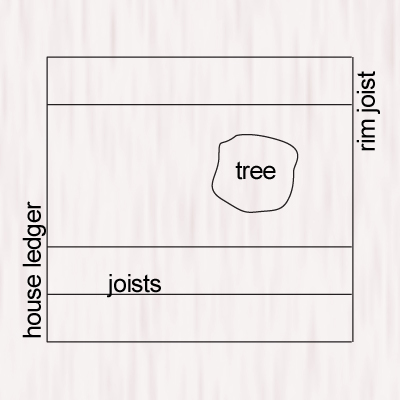
Second, install 2 pieces of blocking between the 2 joists on either side of the tree, one on the house side and one on the rim joist side. (You’ll want to double up this blocking if you’re spanning more than 4’)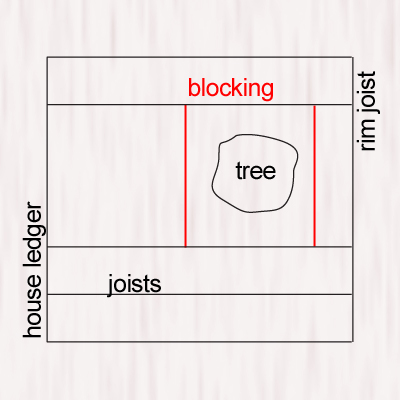
Third, install the remaining joists on layout between the house ledger and the blocking.
Fourth, install shorty joists on layout on the outside edge of the tree from the 2nd piece of blocking to your rim joist.
Fifth, cut blocking w/ 45º angles and nail to interior corners of the box around the tree.
Your framing should now be within 5” of the tree on all sides. (You may need to adjust your joist layout slightly or add additional blocking to keep the box within 5” of the tree).
DECKING
I normally start at the house and work out so in this case, I lay down decking until the tree interrupts the course.
Set the deck board down in place on the deck and trace a line following the tree’s contours on the board, keeping the final cut 2-3” away from the tree
Cut out the line using a jigsaw and clean up the edges w/ a router and 1/8” roundover bit.
Install the deck board.
Subsequent rows on either side of the tree get a similar treatment –
- Rough-cut the end of the deck board to the tree,
- Butt the rough cut up to the tree and trace the final cutline,
- Cut the final line w/ a jigsaw, clean up w/ router and roundover bit,
- Install the deck board keeping that 2-3” gap.
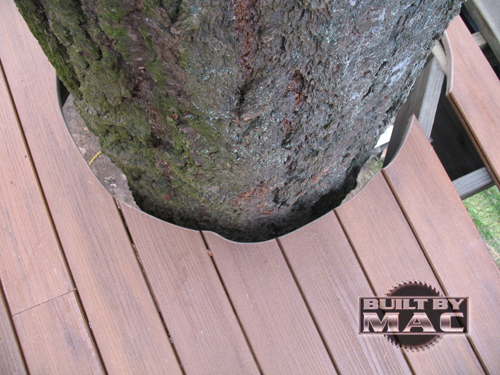 At each row, I pull measurements from both sides to make sure everything lines up on the far side of the tree.
At each row, I pull measurements from both sides to make sure everything lines up on the far side of the tree.
When I get to the far side of the tree, I trace a final cut line on the full-length piece of decking, cut and install.
Continue on w/ your decking until you’re finished, install all handrails, clean up and voila! You’ve now got a tree in your deck!


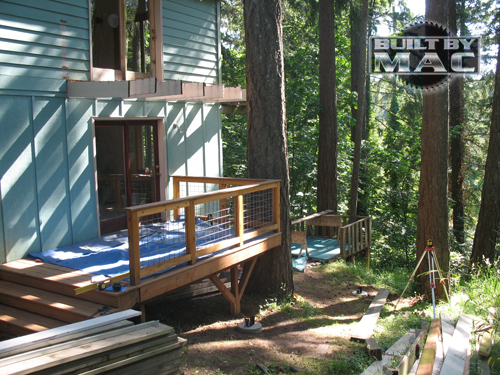


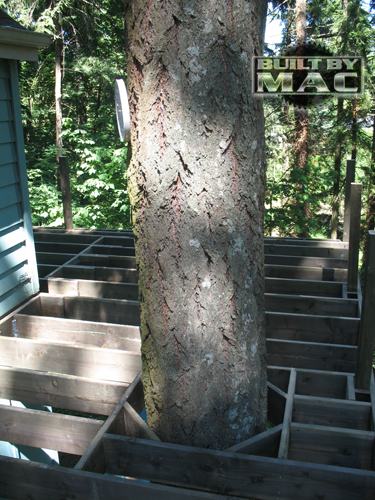
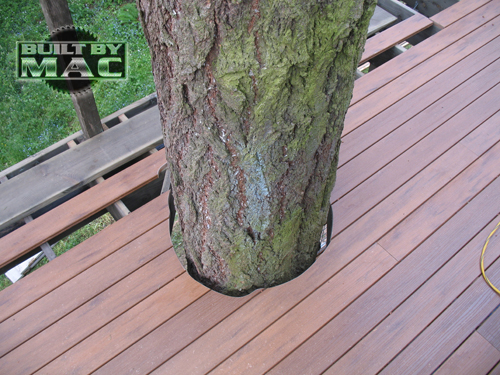
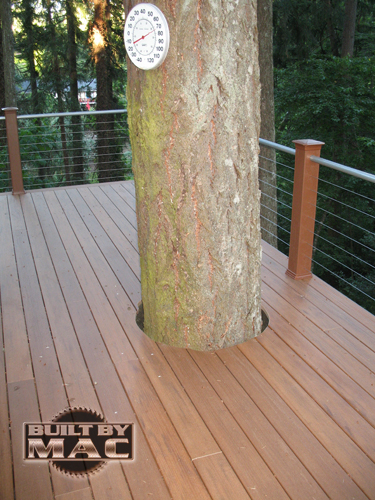
 In addition to qualities such as decreased maintenance, scratch resistance and mold/mildew resistance, non-wood decking also allows you to create multi-colored decks. This opens up a whole new realm of style for your next outdoor project.
In addition to qualities such as decreased maintenance, scratch resistance and mold/mildew resistance, non-wood decking also allows you to create multi-colored decks. This opens up a whole new realm of style for your next outdoor project.













